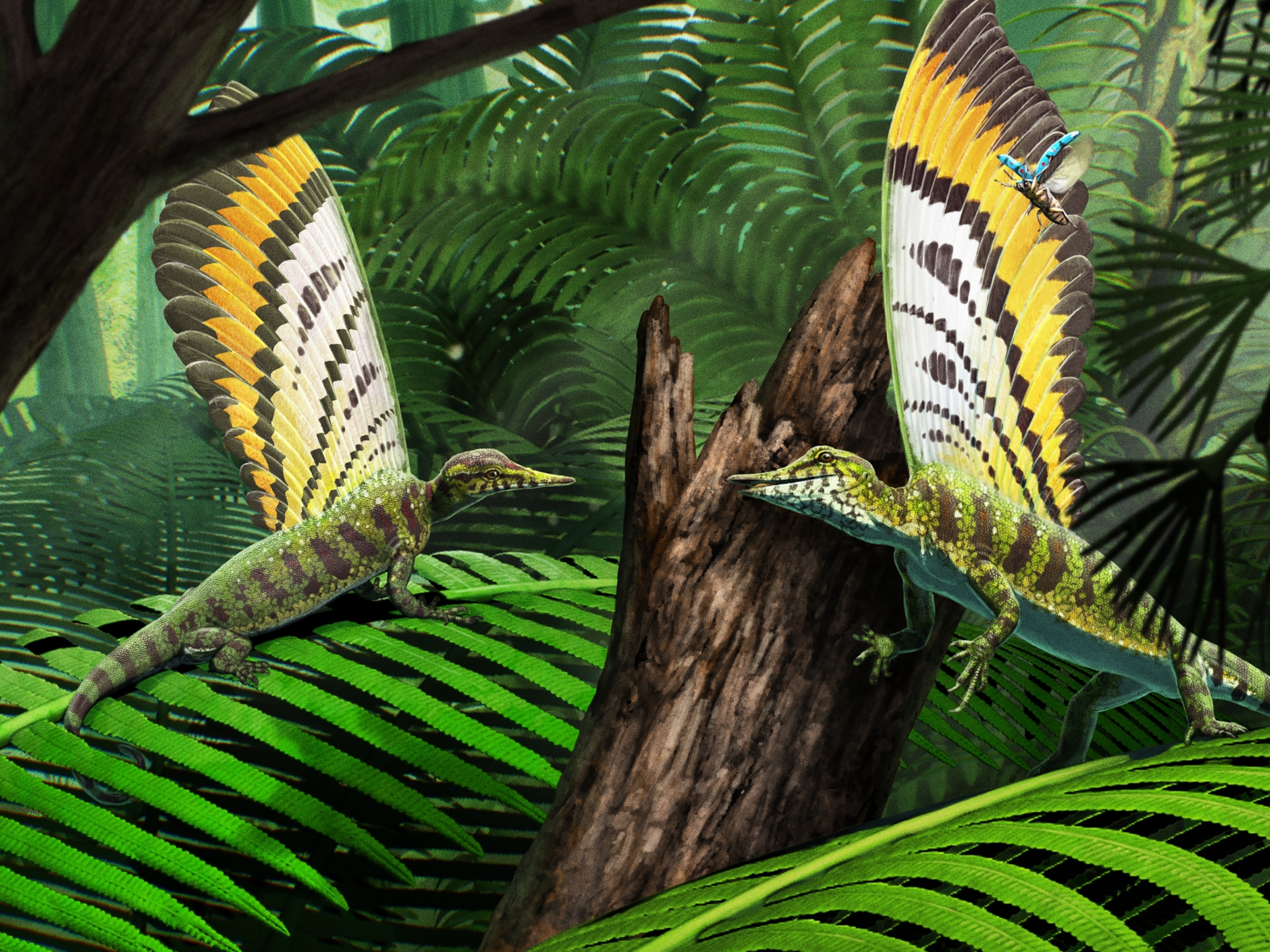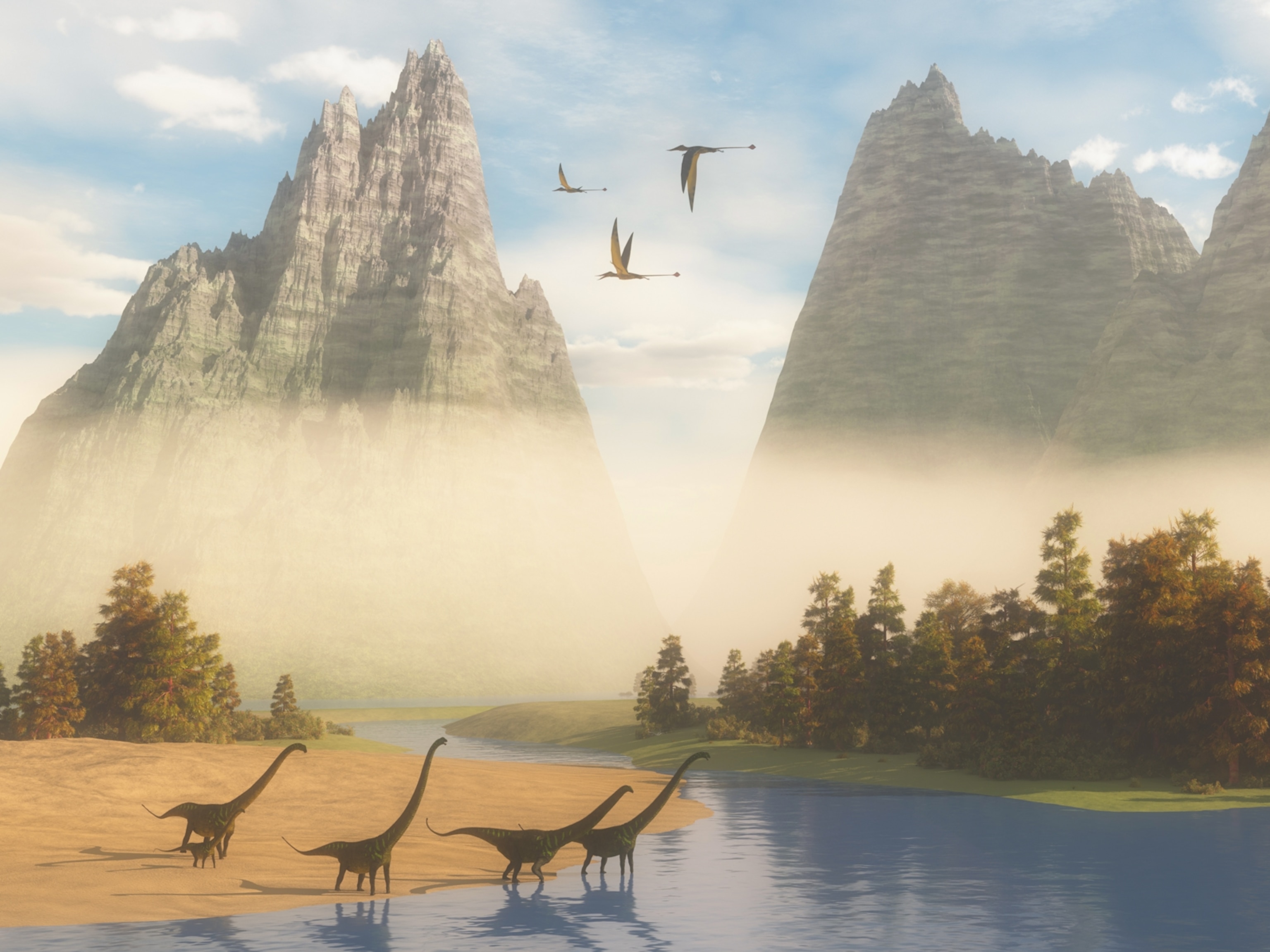
Dinosaur Feathers Changed With Age
Rapid and bizarre switches suggest dinos had birds beat for plumage diversity.
Newfound fossils of a feathered dinosaur suggest that the extinct reptiles might have possessed a diversity in plumage types that puts modern birds to shame. (See bird pictures.)
Farmers in northeastern China have unearthed two roughly 125-million-year-old specimens of the dinosaur Similicaudipteryx, a member of the group called the oviraptorosaurs, which are believed to be ancestors of birds.
(See the first pictures of "true color" feathered dinosaurs.)
The species, most likely a plant-eater, was first described in 2008. It had robust jaws similar to those of other oviraptorosaurs, but with two unusually large buck teeth.
The two new fossils belong to a pigeon-size juvenile dinosaur thought to be just a year or two old and a three- to four-year-old duck-size youth.
The younger animal's fossil included short ribbonlike feathers. On its tail, each feather was just 1.6 inches (4 centimeters) long, while on its arms a typical feather was less than 0.8 inch (2 centimeters) long. (Related: "Dino-Era Feathers Found Encased in Amber.")
By contrast, the older dinosaur sported long quills, with each tail feather measuring 13.7 inches (35 centimeters) long and a typical arm feather measuring roughly 9.8 inches (25 centimeters) long.
The findings suggest feathered dinosaurs might have undergone a flurry of changes as they matured—unlike anything seen in modern birds, said study co-author Xing Xu of the Chinese Academy of Sciences in Beijing.
Dinosaur's Ribbonlike Feathers "Really Bizarre"
Modern birds continuously replace old feathers with new ones. But birds completely change the types of feathers in their coats just once their entire lives: when they switch from warm down to their adult plumage.
Very young dinosaurs are thought to have been covered in down, so the new find suggests that dinosuars went through at least three stages of feather types: full down, to a mix of down and "ribbons," to down and quills.
The long quills on the older Similicaudipteryx are much like those seen on modern birds, and they might have served as ornaments or to help the dinosaur balance itself as it ran. (Related: "First Dinosaur Feathers for Show, Not Flight?")
The younger dinosaur's ribbonlike feathers are superficially similar to some specialized plumes seen today, for example, on birds of paradise. But the ancient feathers are actually a type that has been lost in the course of evolution, and the role they played on the younger juvenile remains unknown.
These extinct feathers would not have been useful for warmth, for example, given how flat they are, Xu said.
While the "ribbons" might have served as ornaments, "in modern animals, structures used for display generally develop relatively late, when the animal is mature, for attracting mates," he added. "Their appearance here is at the wrong stage—it's really bizarre."
Similicaudipteryx's odd changes suggest that early birds and feathered dinosaurs experimented with a diversity of feather types and a variety of ways to use them, "which only later stabilized to the more conservative system we see now with modern birds," Xu said.
"There were very, very strange structures in the history of feathers."
The feathered dinosaurs are described in this week's issue of the journal Nature.





